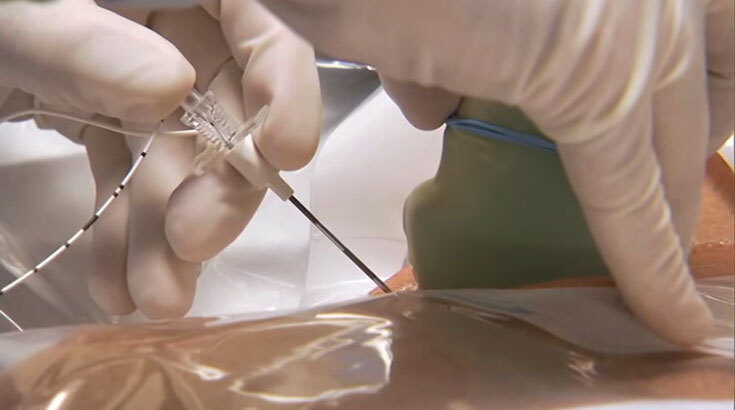From reduced puncture complications to increased patient satisfaction, there are many great reasons to use bedside ultrasound for anesthetic needle placements.

Anesthesiologists and nurse anesthetists are increasingly using ultrasound-guided needle placement to improve operating efficiency while decreasing placement complications and patient discomfort. Medical research supports the use of ultrasound in anesthesia-related needled placements.
How does ultrasound help guide needle placement?
Simply put, seeing is believing. Ultrasound-guided injections have a greater chance of hitting the mark because practitioners can visualize the needle placement in real-time.
Better needle visualization increases efficiency during procedures such as:
- steep angle injections
- nerve blocks (upper extremity blocks, neuraxial blocks, femoral nerve blocks, brachial plexus blocks, regional pain blocks)
- epidurals
Anesthesiologists who utilize ultrasound guidance for needle placement see a decrease in vascular puncture and an increase in the effectiveness of pain management medications.
What proof is there that ultrasound helps anesthetists?
A growing body of medical research supports the use of ultrasound guidance for regional anesthesia. For example, with ultrasound guidance compared to peripheral nerve stimulation, there was shown to be a significant decrease in the risk of vascular puncture (risk ratio of .16); an increase in the nerve block duration by 25%; and a 29% faster onset time1.
A study published in the June 2013 Academic Emergency Medicine (AEM) Journal reported that, for older adults in the ED suffering from hip fracture-related pain (over the course of 4 hours), ultrasound-guided three-in-one femoral nerve blocks significantly reduced both pain intensity and the amount of rescue analgesia needed when used as an adjunct to standard treatment with parenteral opioids. The same study also found that standard parenteral opioid-only pain management offered ineffective pain control in the study cohort of patients with severe pain from hip fractures2.
What Sonosite ultrasound customers say
"Whenever we purchase new equipment, it is important that it is as future-proof as possible. With the X-Porte, not only is the hardware fantastic, but the platform is heavily software-based, and therefore dynamic." Dr. Justin Kirk-Bayley Read More
"When you have different operators, with varied ultrasound backgrounds, ease of use is very important." Dr. Ulf Großmann Read More
1Abrahams MS, Aziz MF, et al. Ultrasound guidance compared with electrical neurostimulation for peripheral nerve block: a systematic review and meta-analysis of randomized controlled trials. Br J Anaesth. 2009;102(3):408-17.
2Beaudoin FL, Haran JP, et al. A comparison of ultrasound-guided three-in-one femoral nerve block versus parenteral opioids alone for analgesia in emergency department patients. Acad Emerg Med. 2013 Jun ;20(6):584-91. doi: 10.1111/acem.12154.
Did you know ultrasound-guided nerve blocks are reducing opioid prescriptions?
Watch how St. Joseph's Heath Care System is using ultrasound to help to reduce the opioid epidemic.
Related Articles


